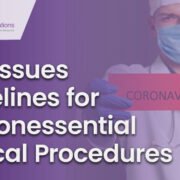Reimbursement Insights: Medicare and Medicaid Coverage for Cardiology Billing
Medicare and Medicaid are the two biggest healthcare insurance programs in the United States. They provide healthcare coverage for different medical specialties, and cardiology is one of them. The federal government has made different rules and regulations applicable to eligible populations. These rules may change or modify with time, causing confusion for medical billing services. Therefore, receiving reimbursement for Medicare and Medicare cardiology billing seems difficult. However, we can easily overcome the issue by understanding the principles of medical billing for cardiology.
So, try not to worry when things become a little challenging with all those rules and stuff. We are here to help you understand the reimbursement principles regarding cardiology billing. Let’s get started with a little introduction to Medicare and Medicaid programs in general.
Medicare and Medicaid Health Insurance Programs
For a long time, the US has promoted equality in healthcare services. However, the federal government reshaped its healthcare quality goal from equality to equity. Further, it has supported the aim by initiating several programs to facilitate access to quality care. Medicare and Medicaid are such government-supported insurance programs in America. The two programs, which first emerged in 1965, provide cost assistance to certain segments of society. It has a certain coverage area for a specific eligible population.
Both Medicare and Medicare cause confusion due to similar-sounding names, but they’re different. Many older people and disabled individuals receive medical coverage via Medicare. The level of income has no impact on Medicare eligibility. Whereas Medicaid is a program that is intended for people with low incomes. It is sometimes a last resort for those who have no other options.
Medicare and Medicaid Cardiology-related Coverage
Cardiologists tend to file claims under Medicare Part B’s guidelines. It is a broad field that includes a wide range of outpatient services. The Medicaid cardiology billing complexities, however, differ from state to state. Nonetheless, it spreads its protective wing over basic cardiological treatments for eligible beneficiaries.
Some of the cardiology services covered under the Medicare and Medicaid programs are:
Diagnostic Tests
In this category, the coverage extends to several stress tests, ECGs, Holter monitoring, and echocardiograms.
Procedures
Medicare and Medicare extend the coverage if a medical necessity occurs. In such cases, the programs cover cardiology billing costs for:
- Cardiac catheterization
- Angioplasty
- Stent placement
- Pacemaker implantation
Consultations
The program covers medical billing costs for all the consultations with cardiologists. As long as patients follow the prescribed rules and guidelines, they retain their eligibility.
Chronic Condition Management
The patient can also get treatment for chronic illnesses, including heart failure and hypertension.
Preventive Services
Usually, preventive services help in the elimination of any serious health issues. For instance, cardiology patients have a high risk of hypercholesterolemia and cardiovascular diseases. Through preventive services, we can delay them, and these services are also part of the insurance program.
How to Maximize the Cardiology Billing Reimbursement?
Both Medicare and Medicaid have their own reimbursement procedures for medical billing in cardiology.
Have you heard about the Physician Fee Schedule (PFS)? In PFS, CMS assigns the relative value units (RVUs) for each professional service every year. RVUs are then multiplied by a conversion factor. Afterward, we get the final reimbursement amount to be claimed by the medical billing services. As the conversion factor gets updated annually, we must use the relevant CF only. For 20223, the CF is $33.06.
Conversely, we have Medicaid reimbursement for cardiology services. This also varies from one state of the US to another. Anyhow, myriad states obey the Medicare PFS for setting Medicaid-covered service rates.
Here we have essential insights for effective cardiology medical billing services:
Comprehensive Documentation
Your documentation for cardiology services must support your claims. It must be elaborative without missing any piece of information. A comprehensive record must include everything from the patient’s demographics to their medical history.
Coding Accuracy
Right coding holds the key to timely reimbursement in cardiology billing. Stay current with the CPT and ICD-10 codes and use them wisely.
Medical Necessity
The cardiology billing services must prove the medical necessity of the treatments performed. Therefore, Medicare and Medicaid both need supporting evidence.
Prior Authorization
It is a recommended step before performing some of the cardiology services. Once Medicare and Medicaid ensure their coverage, the providers can go ahead. Therefore, the cardiologist must have a full understanding of the program’s guidelines.
Payment Rates
As stated earlier, the geographic location and specificity of the services provided matter. Therefore, the reimbursement rate may vary in different states in the US.
Compliance with Regulations
Billing errors and frauds are real, resulting in penalties or the loss of reimbursement privileges. HIPAA security measures are not neglectable to stop cyber-attacks and their risks.
Appeal Process
For denials, the cardiology billing services have the right to appeal. It may often result in successful reimbursement collection.
What Billers Need to Know
Trends in Medicare and Medicaid reimbursement change; that’s why billers should be aware. Currently, Medicare and Medicaid are moving towards a value-based payment system. So, Medicare gives reimbursements for care outcomes rather than service volume. Whereas, Medicaid is still obeying the fee-for-service model to some extent.
The management of Medicare and Medicaid in cardiology billing is never easy. A wide spectrum of patients, including the elderly and those with limited incomes, have access to cardiology care. It might be challenging to bill for cardiology under these plans. However, if we follow the right procedures, we may effectively traverse the reimbursement process.














Leave a Reply
Want to join the discussion?Feel free to contribute!